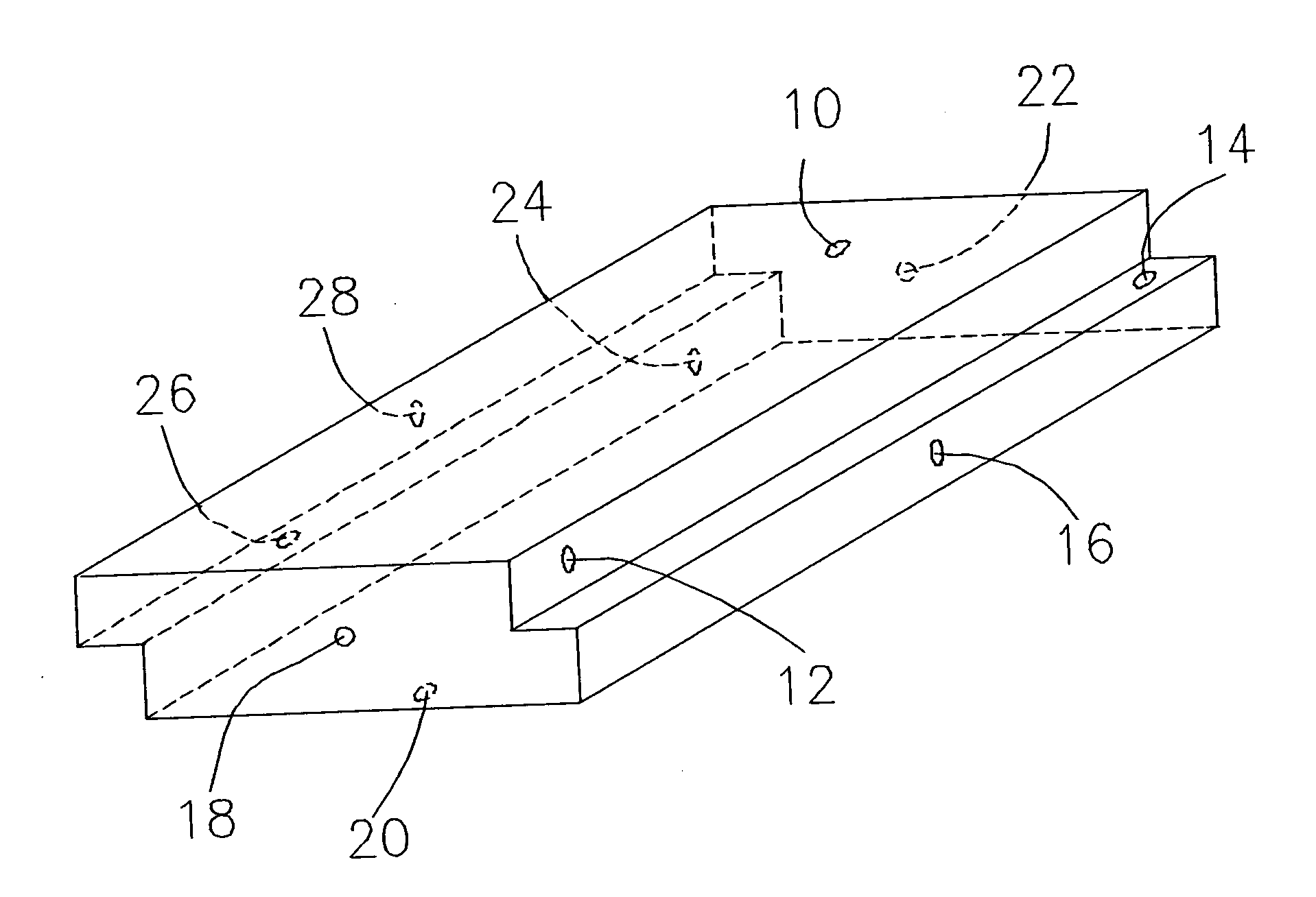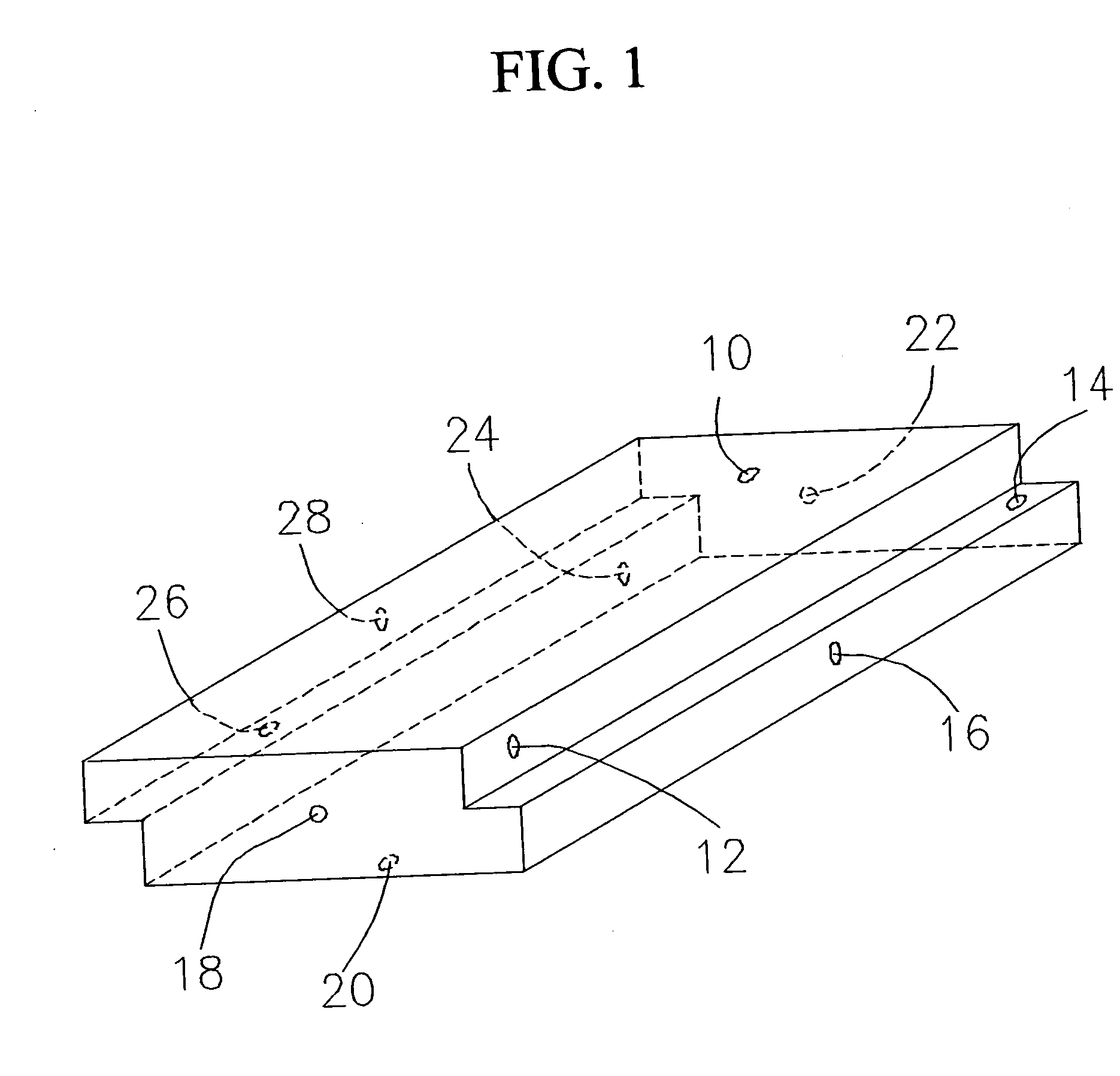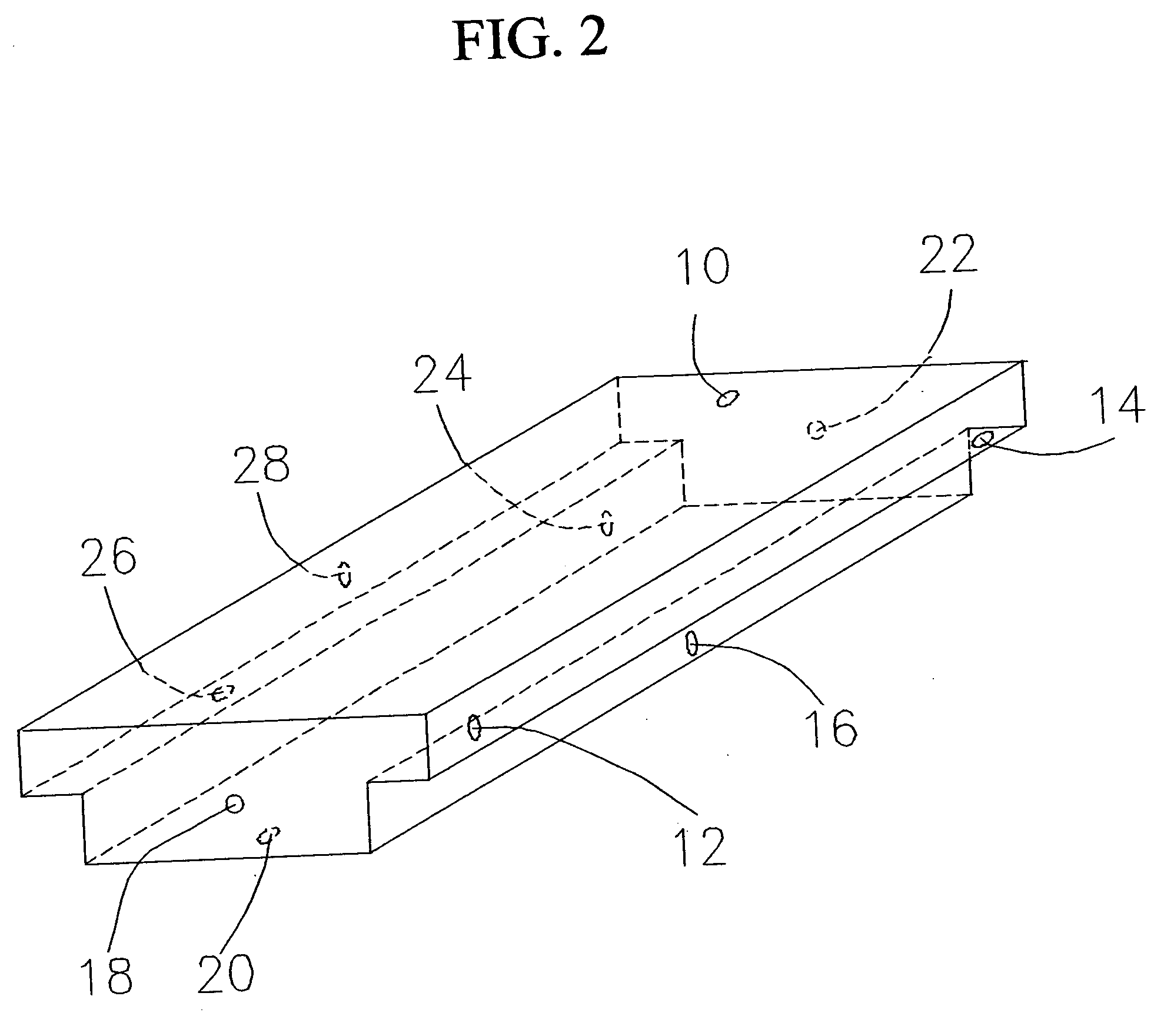Interlocking polymeric foam floor underlayment and process for making
a technology of interlocking polymeric foam and floor underlayment, which is applied in the field of polymeric foam structure, can solve the problems of inability to have such prior experience of floor underlayment installers, the installation of floor underlayment requires very precise positioning, and the cost and quality of the completed floor installation may not be such, so as to achieve the effect of light weight and convenient handling
- Summary
- Abstract
- Description
- Claims
- Application Information
AI Technical Summary
Benefits of technology
Problems solved by technology
Method used
Image
Examples
Embodiment Construction
[0017] In general usage the term “polymer” is accepted to mean naturally occurring or synthetic compounds consisting of large molecules made up of a linked series of many smaller identical molecules. These smaller molecules are referred to as monomers. The list of polymers in everyday use is extensive. Polymers in everyday use include polystyrene, such as in plastic beverage cups; polypropylene, such as in plastic utensils; polyethylene terephthalate, such as in carbonated beverage bottles; high density polyethylene, such as in plastic milk jugs; and linear low polyethylene, such as in plastic garbage bags.
[0018] As referred herein, the term “polymeric foam” refers to materials that are comprised of a uniform and consistent mixture of one or more solid polymers and a gaseous material wherein the two phases are arranged so that the solid phase continuously encapsulates small cells of the gas throughout the domain of the material.
[0019] As referred herein, the term “polymeric foam s...
PUM
| Property | Measurement | Unit |
|---|---|---|
| density | aaaaa | aaaaa |
| density | aaaaa | aaaaa |
| density | aaaaa | aaaaa |
Abstract
Description
Claims
Application Information
 Login to View More
Login to View More - R&D
- Intellectual Property
- Life Sciences
- Materials
- Tech Scout
- Unparalleled Data Quality
- Higher Quality Content
- 60% Fewer Hallucinations
Browse by: Latest US Patents, China's latest patents, Technical Efficacy Thesaurus, Application Domain, Technology Topic, Popular Technical Reports.
© 2025 PatSnap. All rights reserved.Legal|Privacy policy|Modern Slavery Act Transparency Statement|Sitemap|About US| Contact US: help@patsnap.com



